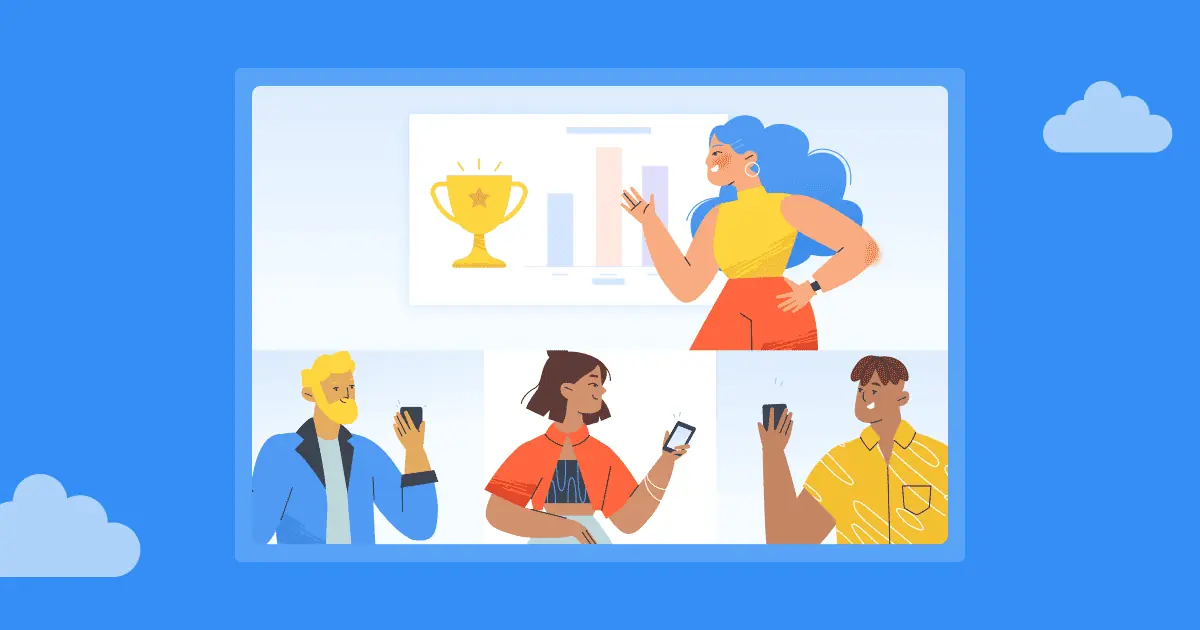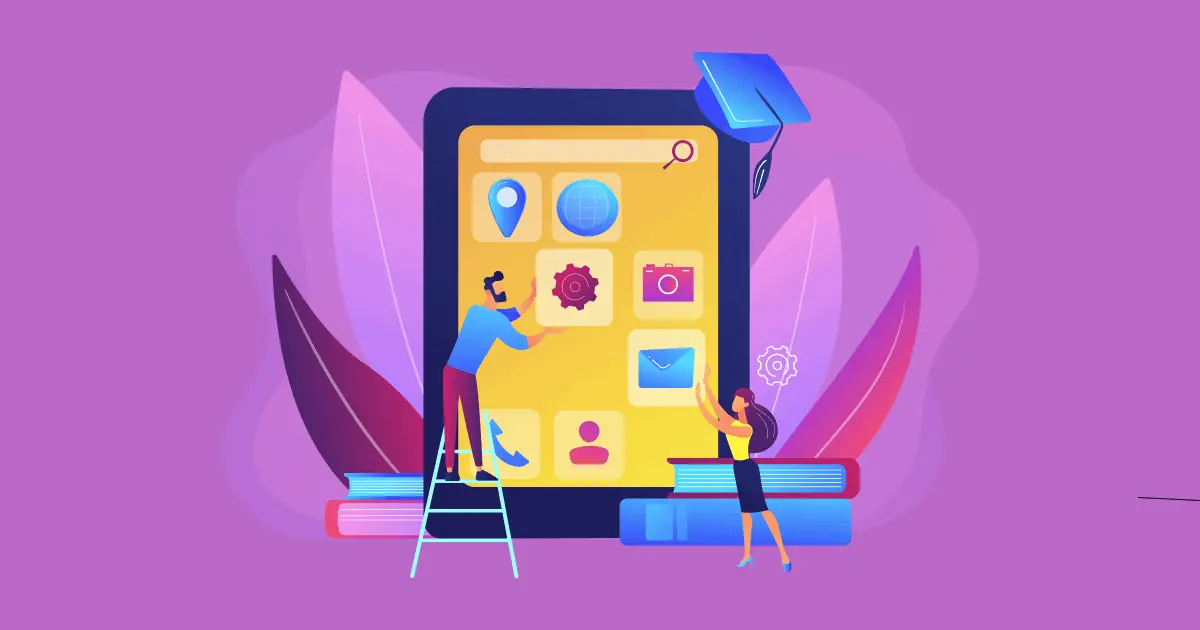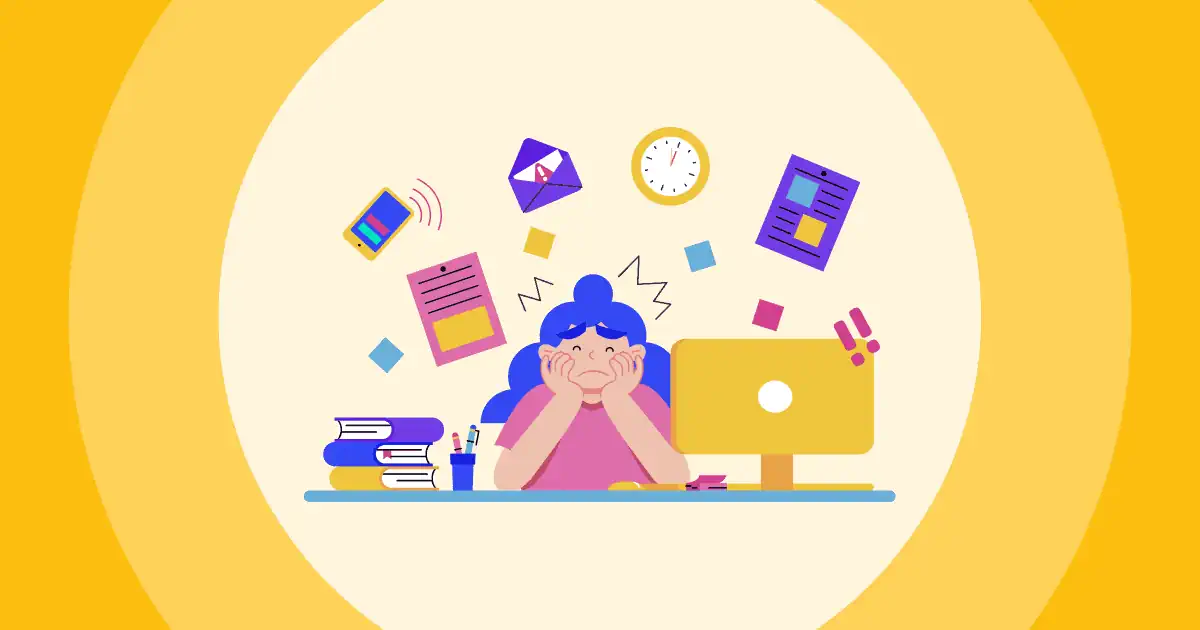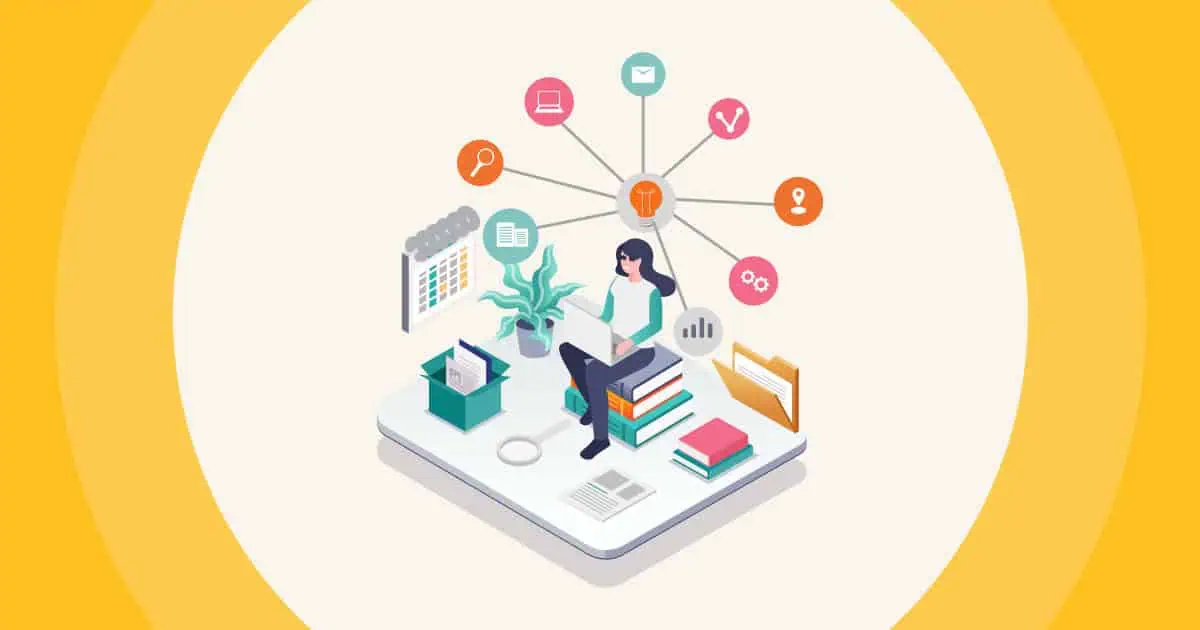If you want to read other, learning observations!
“Monkey see, monkey do” - American idiom
Observation in learning is essential. From the earliest stages of life, humans are wired to observe and imitate. It is where the concept of learning observations comes from to fill the gap between firsthand experience and the unknown.
Albert Bandura's social learning theory indicates that observation and modeling play a primary role in how and why people learn. It is about individuals learning not just through direct experience but also by observing others and the consequences of their actions.
So, what do learning observations mean, and how to take advantage of them? Let's delve into this article.
Overview
| What does learning observation mean? | The process of learning by watching the behaviors of others. |
| Who first recognized the phenomenon of learning observations? | Bandura, 1985 |
| What are the 4 steps of observational learning? | Attention, retention, reproduction, and motivation. |
Table of Contents:
- What are learning observations?
- What are examples of learning observations?
- Why is learning observations important?
- What are the 4 processes of observational learning?
- How to learn through observation?
What are Learning Observations?
Observation is a natural and innate behavior for humans. Learning observation, or observational learning, refers to the process through which individuals acquire new knowledge, skills, behaviors, and information by watching and imitating the actions, behaviors, and outcomes of others.
In fact, learning through observation is often referred to as vicarious learning, where individuals learn by witnessing the experiences and outcomes of others.
The concept of learning observation also finds its roots in Albert Bandura's influential social learning theory.
The Social Learning Theory, according to Bandura, states that in response to observation, imitation, and modeling, learning can occur even without changing behavior (1965)
Additionally, learning by observation in psychology has been examined in much research, one of which describes Mirror neurons, specialized cells in the brain, which have been a focal point of research related to learning by observation.

Get your Students Engaged
Start meaningful discussion, get useful feedback and educate your students. Sign up to take free AhaSlides template
🚀 Grab Free Quiz☁️
What are Examples of Learning Observations?
In a world overflowing with stimuli, our minds act as information sponges, absorbing insights from every corner of our environment. We encounter learning observation examples every day.
Babies watch their caregivers' movements and mimic their facial expressions. Children keenly watch as parents tie shoelaces or arrange blocks, replicating these actions in a quest for mastery. Adolescents closely observe peers to comprehend social dynamics and behaviors. Adults learn by watching experts, whether it's a chef dexterously slicing ingredients or a musician skillfully playing an instrument.
In informal settings, we observe friends, family members, colleagues, and even media personalities in order to absorb information and adopt new skills. Likewise, in formal education, teachers leverage the power of observation to demonstrate concepts, behaviors, and problem-solving techniques.
For instance, there is an increasing trend in which students are studying by watching videos of other students studying online. The so-called study-with-me videos went viral between 2016 and 2017 and have earned more than a quarter of a million subscribers.
“All of us are watchers – of television, of time clocks, of traffic on the freeway – but few are observers. Everyone is looking, not many are seeing.”
- Peter M. Leschak
Media, including television, movies, and online platforms, heavily impact learning observation. People often learn from Role Models, for example, fictional characters, celebrities, and real-life influencers alike. These people play as sources of inspiration, caution, and reflection, influencing viewers' opinions and decisions.
For example, Taylor Swift, a globally recognized singer-songwriter, actress, and businesswoman, her influence extends far beyond her music. Her actions, values, and choices are observed by millions of fans worldwide, making her a compelling role model for learning and inspiration.

Tip for Engaged Learning
💡What Are The Best Collaborative Learning Strategies?
💡The Talkative Classroom: 7 Tips to Improve Communication in Your Online Class
Why is Learning Observations Important?
Observational learning is a natural skill that starts in early childhood. Practice observation in learning is crucial due to its plenty of benefits for learners from a tender age. Check out the five main benefits of learning observations below:
Efficient learning
First and foremost, observational learning is an effective and efficient studying method. It taps into our natural inclination to learn from others, enabling us to grasp complex concepts quickly. By observing real-world examples, learners can bridge theoretical knowledge with practical application. This method not only enhances comprehension but also nurtures critical thinking skills, making learning a dynamic and engaging process that extends far beyond textbooks and lectures.
Broadened perspective
Indeed, we possess the remarkable ability to extract wisdom from others' experiences, transcending the limitations of our own lived moments. When we observe someone successfully navigating a situation, solving a problem, or conveying an idea, we are granted a glimpse into their cognitive processes and strategies.
Cultural transmission
In addition, learning observations not only broaden our intellectual horizons but also connect generations and cultures. They allow us to inherit the discoveries, innovations, and accumulated insights of those who have walked before us. Just as ancient civilizations learned from the stars to navigate and predict the seasons, we, too, learn from the shared narratives of our human story.
Ethical considerations
Observation has a strong connection with ethics. People are easily influenced by observing the behavior of others. For example, in the workplace, if leaders engage in unethical actions, their subordinates are more likely to follow suit, assuming it's acceptable. This highlights the power of observation in shaping ethical standards and underscores the need for positive role models to foster a culture of integrity and responsible behavior.
Personal transformation
What's more? You'll be surprised to find that learning observation facilitates personal transformation. It's an inspiring approach that motivates individuals to overcome limitations and strive for self-improvement. This transformative power of observation reinforces the idea that learning isn't just about acquiring knowledge but also about evolving into a better version of oneself.
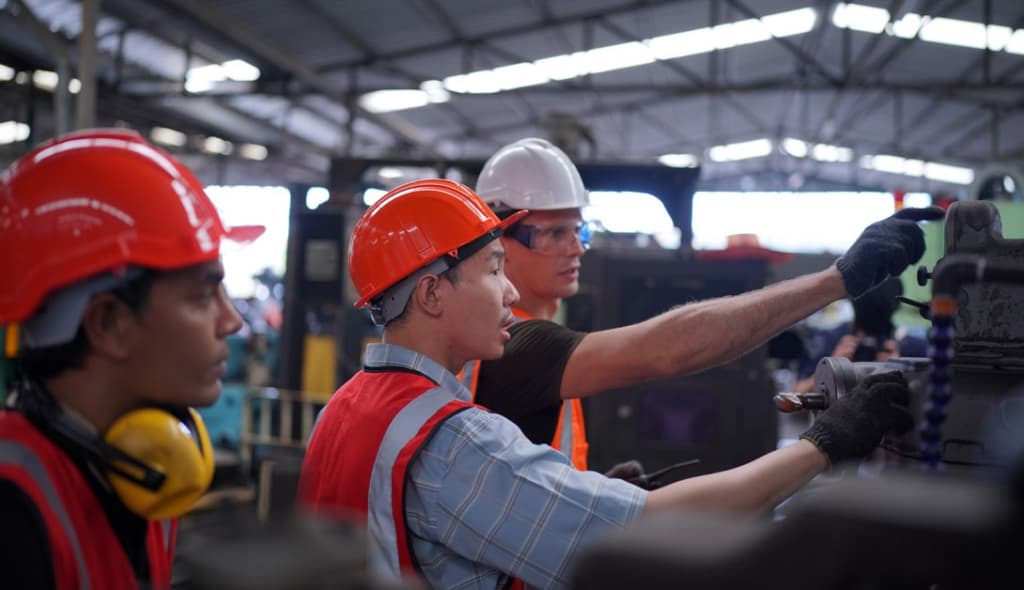
What are The 4 Processes of Learning Observations?
There are four stages of learning by observation, according to Bandura's social learning theory, including attention, retention, reproduction, and motivation. Each stage has a distinguished role and is closely linked with each other to optimize the learning process.
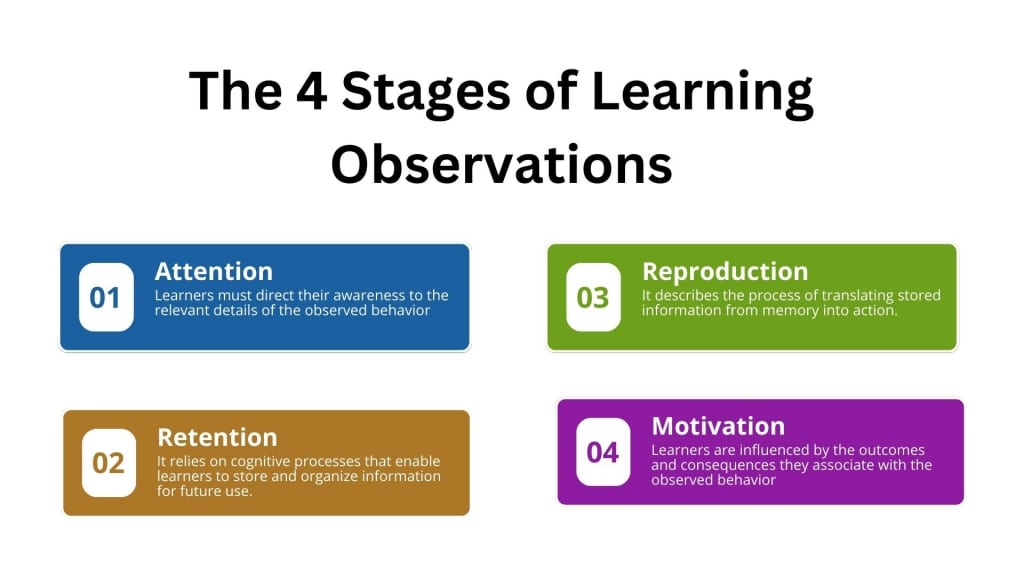
Attention
Observational learning starts with paying attention to detail. Without attention, the process of learning from observation means nothing. Learners must direct their awareness to the relevant information of the observed behavior, ensuring they capture the nuances, strategies, and outcomes.
Retention
After attention, learners retain the observed information in their memory. This stage involves encoding the observed behavior and related details into memory, ensuring that it can be recalled later. Retention relies on cognitive processes that enable learners to store and organize information for future use.
Reproduction
Come to the third phase, learners attempt to replicate the observed behavior. Reproduction involves translating stored information from memory into action. For example, if someone watches a cooking tutorial online, the reproduction stage involves applying the demonstrated steps and ingredients to create the dish in their own kitchen.
Motivation
Then, the motivation is built up. In this final phase of observational learning, learners are influenced by the outcomes and consequences they associate with the observed behavior. Positive outcomes, such as rewards or success, enhance motivation to replicate the behavior.
How to Learn Through Observation?
Learning through observation can be a daunting task at first. You might wonder where to start, what you should focus on, and if it is weird to look at other behaviors for so long.
If you are looking answer for these questions, the following guide might help you:
- Select Relevant Role Models: Identify individuals who excel in the area you're interested in. Look for people with diverse approaches to gain a well-rounded perspective.
- Focus on Specific Behaviors: Narrow down your focus to specific behaviors, actions, or strategies. This prevents overwhelming yourself with too much information.
- Observe Context and Reactions: Pay attention to the context in which behaviors occur and the reactions they elicit. This provides a deeper understanding of why specific actions are taken.
- Stay Open-Minded: Be open to learning from unexpected sources. Insights can come from people of all backgrounds and experiences.
- Practice Regularly: Learning by observation is a continuous process. Make it a habit to regularly observe, reflect, and apply what you've learned.
- Seek Feedback: If possible, share your attempts with someone knowledgeable in the field or the skill you're learning. Their feedback can provide valuable insights and suggestions for improvement.
⭐ Want more inspiration? Check out AhaSlides right away! AhaSlides will bring you to a whole new world of interactive learning and engagement. With its dynamic features, you can create interactive presentations, quizzes, polls, and discussions that make learning a fun and collaborative experience.
Frequently Asked Questions:
What are some examples of learning observations?
To cite an example, toddlers can learn the way to open the door by observing their parents, or beginners can learn how to set their hand on the piano by watching their teachers.
How many stages in learning observations?
There are 5 phases in learning observations, including Attention, Retention, Reproduction, Motivation, and Reinforcement.
Ref: Very well mind | Water bear learning | Forbes | Bandura A. Social Learning Theory. Prentice Hall; 1977.

